Organic architecture – Woodland Home, Wales
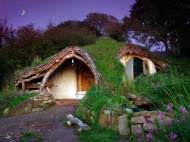 Woodland Home in Wales, UK, is an inspirational project that doesn’t rely on modern materials and it was literally built from green materials. The house was built with maximum regard for the environment and by reciprocation provides a unique opportunity to live close to nature. Unlike the Earth House Estate in Switzerland, the Woodland Home in Wales has all natural finishing.
Woodland Home in Wales, UK, is an inspirational project that doesn’t rely on modern materials and it was literally built from green materials. The house was built with maximum regard for the environment and by reciprocation provides a unique opportunity to live close to nature. Unlike the Earth House Estate in Switzerland, the Woodland Home in Wales has all natural finishing.
“It was built by myself and my father in law with help from passers by and visiting friends. 4 months after starting we were moved in and cozy. I estimate 1000-1500 man hours and £3000 put in to this point”, said Simon Dale. “Being your own (have a go) architect is a lot of fun and allows you to create and enjoy something which is part of yourself and the land rather than, at worst, a mass produced box designed for maximum profit and convenience of the construction industry.”
The 50 square-meter (540 square-feet) Woodland Home was dug into hillside for low visual impact on the surroundings and it also provides shelter and additional insulation. Building from natural materials removes the carcinogenic poisons that fill most modern buildings from the start, and that was the guideline for Dale to choose locally sourced and plentiful materials.
The ground was roughly leveled and compacted with a small excavator before construction started, and the base of this hole was covered with damp proof plastic. Stone and mud from diggings were used for retaining walls and foundations. Scrap wooden pallets were placed over the plastic, and a single thickness of straw bales was laid right onto them. Reclaimed crate lids served as the floor boards which are laid directly on top of these straw bales. This is an experimental technique which leads to springy reaction of the floor boards when you step on them.
The frame for the home was built by oak spare wood from surrounding woodland. All of these were selected and felled from the surrounding woodland as part of an ongoing program of thinning to allow selected trees space to grow on to maturity. The entire frame was made with the bark left on, but Dale emphasized that the removal of bark is a better practice for longevity.
The reciprocal roof is ideally suited to round wood construction with a minimum of woodworking and structural complication, since it doesn’t push outwards on the walls and doesn’t require tie beams. The reciprocal roof on Woodland Home is made on an oval, rather than circular wall, and its center is also offset to allow a higher wall on one side whilst keeping the same pitch on all main rafters. It is covered by plastic sheet and mud/turf. The water from the roof is collected in a pond and used for garden. The skylight in roof provides additional natural daylight.
Floor, walls and roof were filled with straw bales, which make the building superbly energy efficient. Straw is highly insulative, giving heat savings of up to 75% compared to a conventional modern house. Straw bale walls have excellent load bearing capacity and are quite suitable for two storey houses and they are stacked like giant bricks and secured to each other with wooden stakes. Walls are covered with lime plaster which is breathable – an important aspect of covering which prevents accumulation of moisture and rotting.
The rest of the materials used in the house such as windows, wood burner, plumbing, and wiring, were found or bought from second hand. Wood burner is used for heating and a flue goes through big stone/plaster lump to retain and slowly release heat. Fridge is cooled by air coming underground through foundations and the energy for lighting, music and computing is provided by solar panels placed on the south side of the roof.
“This building is one part of a low-impact or permaculture approach to life. This sort of life is about living in harmony with both the natural world and ourselves, doing things simply and using appropriate levels of technology. These sort of low cost, natural buildings have a place not only in their own sustainability, but also in their potential to provide affordable housing which allows people access to land and the opportunity to lead more simple, sustainable live”, added Dale.
There were a few drawbacks such as the water which was ensured by a nearby spring and the compost toilet was located in the vicinity of the house. The family has now moved into a larger home which is still being built, and we’re surely going to write about it once it’s finished.

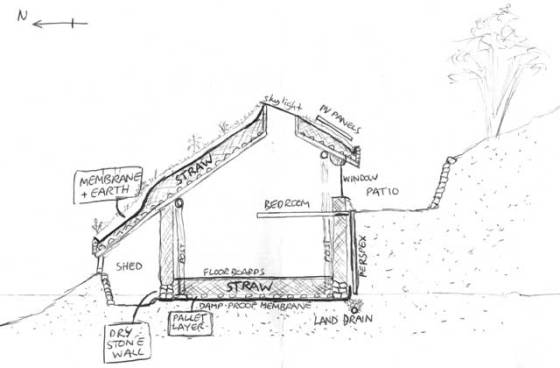
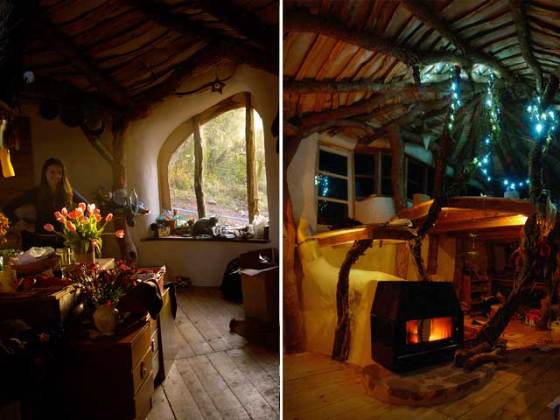
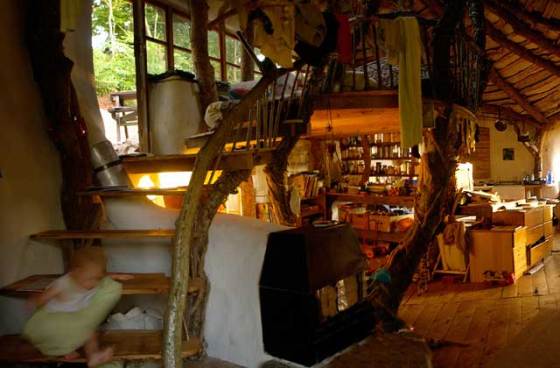
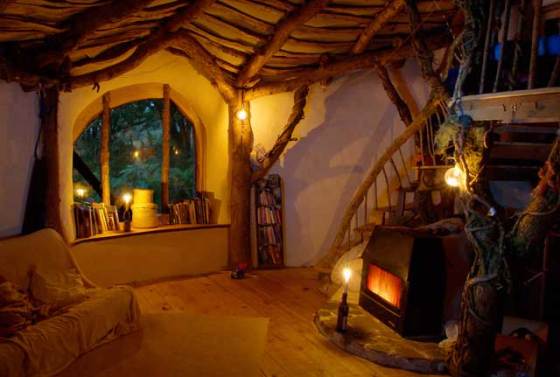








It looks so warm and natural ^_^
So you are writing about organic architecture now?